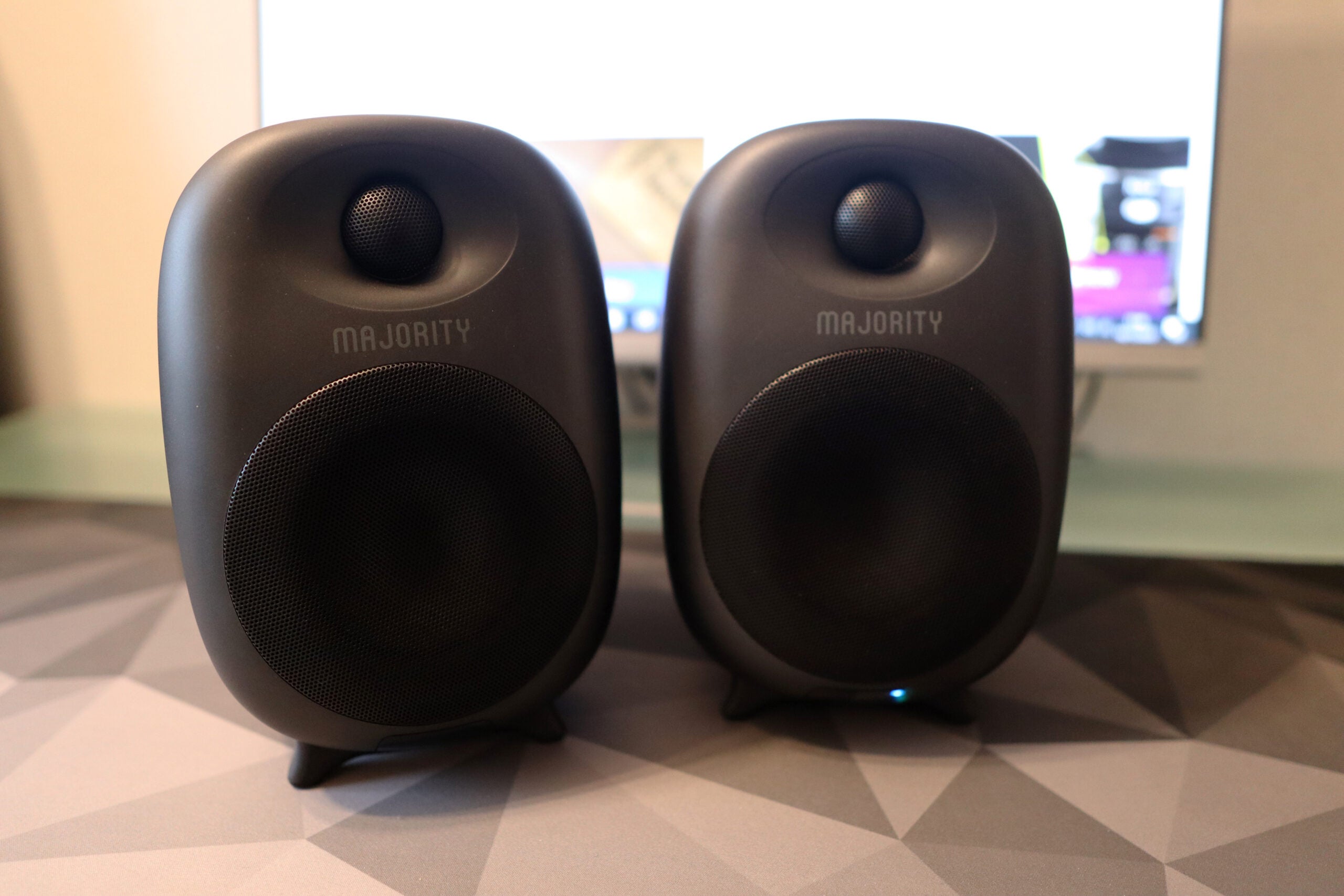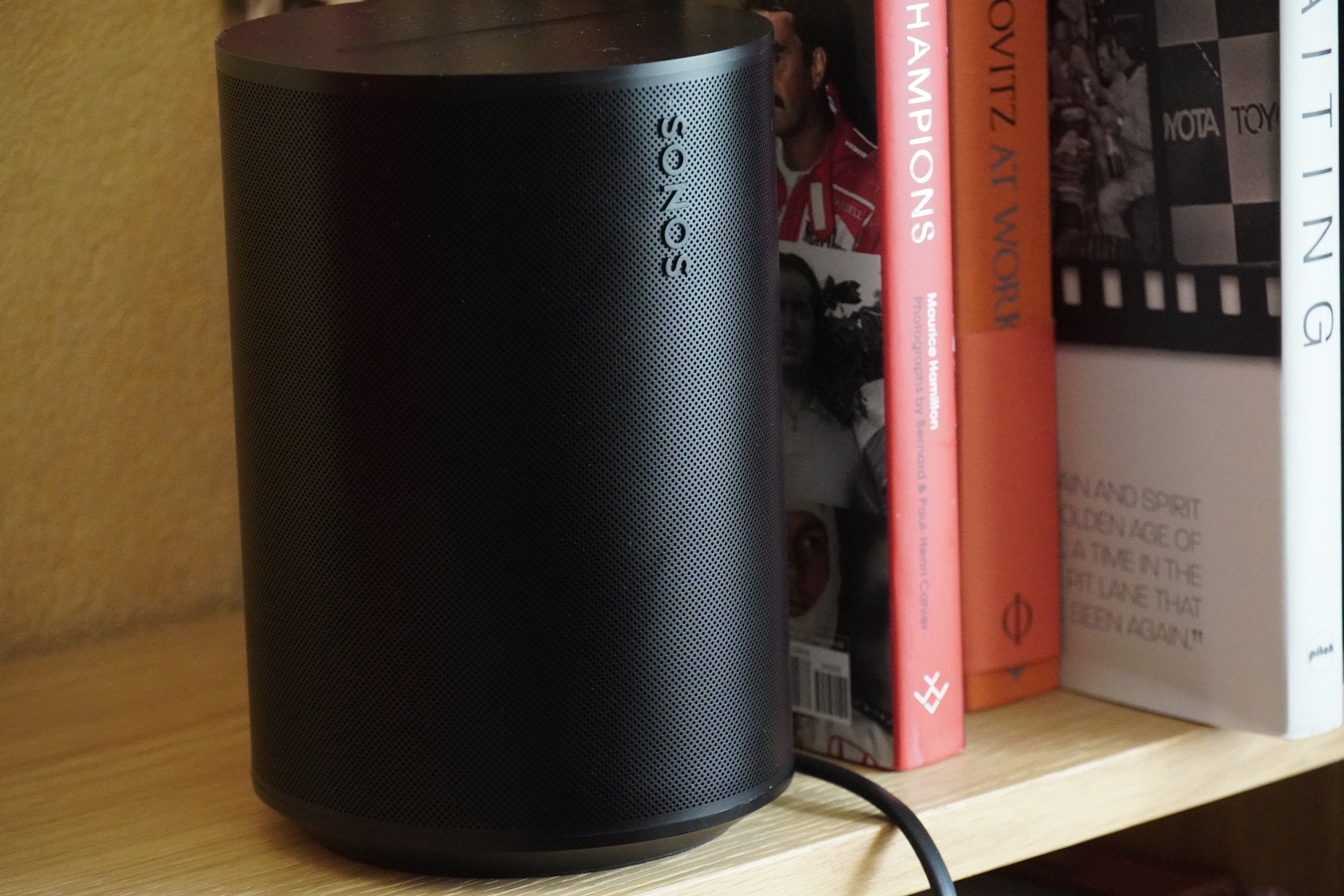Sonus faber Duetto Review
There can be only one Duetto…






Verdict
Convenience and performance don’t come cheap, at least not in this instance – but the Sonus faber Duetto is a wise investment, nevertheless.
Pros
- Robust, informative, and endlessly entertaining sound
- Good specification and extensive functionality
- Elegant design and impressive finish
Cons
- Can lose just a little composure at properly big volumes
- Physical connections are awkward to access
- Unglamorous remote control and (currently) no control app
Key Features
- Power500 watts of Class D power, 200 watts of Class A/B
- ConnectionsWired and wireless connectivity
- Sound37Hz – 30kHz frequency response
Introduction
It took almost four decades of excellence in the design and execution of passive loudspeakers to encourage Sonus faber to deliver a wireless, all-in-one speaker system.
Omnia was its name and the reaction to it was so uncomplicatedly enthusiastic that the company is back with a two-channel variation on the self-contained audio system theme – Duetto.
It looks the part; it’s specified to compete, and it’s priced like a product with pretensions to the high end ought to be. But is it any good?
Availability
The Sonus faber Duetto is on sale now, and in the United Kingdom it’s priced at £3490. In America you’re looking at $3999 or thereabouts, while in Australia it’s more like AU$6995.
The idea of concealing amplification and a stack of connectivity options in a pair of loudspeakers is far from a new one, of course – and brands with just as much hardcore hi-fi credibility as Sonus Faber already have their alternatives available.
KEF, for example, has a couple of systems (LS50 Wireless II and LS60 Wireless) that sit either side of the Duetto, while DALI’s Rubicon 2C is very similarly priced. No audio product exists in isolation, in other words…
Design
- Walnut or graphite finishes
- Weighs 6.8kg each
Never is it more obvious that Sonus faber is an Italian brand than when discussing the design of its products. The company is never shy of putting the hard yards in where the look and finish of its equipment is concerned, and the Duetto is no different. This is identifiably a pair of standmounting loudspeakers – but different enough from the norm to be interesting.

The lute-shaped wooden cabinets take their inspiration from musical instruments, and Sonus faber has integrated a finned heatsink into the rear of each cabinet with both timbre and internal resonance rejection in mind.
At the bottom of each cabinet there’s a little recess to assist with cable management (just power in the case of the secondary speaker, power plus all other physical connections in the case of the primary), and at the top is a faux-leather inlay (which is a customary Sonus faber design flourish). The primary speaker also has the Senso control system integrated into its top panel – input selection and volume can be controlled here.
The standard of build and finish is exemplary here – which, let’s be honest, is only as it should be when you consider the asking price.
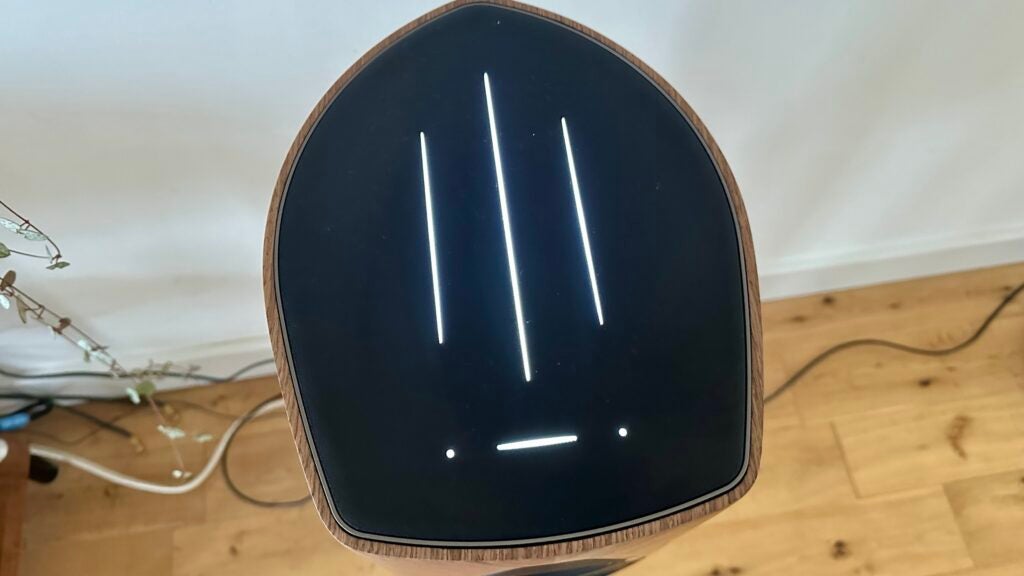
Features
- 500 watts of Class D power, 200 watts of Class A/B
- 25mm tweeter, 133mm mid/bass driver
- 37Hz – 30kHz frequency response
Each Duetto loudspeaker is fitted with a 25mm silk-dome tweeter (featuring a ferrite magnet system with copper cap) and a 133mm long-excursion mid/bass driver (featuring a Neodymium magnet system with copper cap and aluminium ring and enclosed in an organic basket to help ease airflow). Sonus faber provides magnetically attaching grilles to hide them, but – to my eyes, at least – the drivers in their leather baffle surround deserve to be exposed.
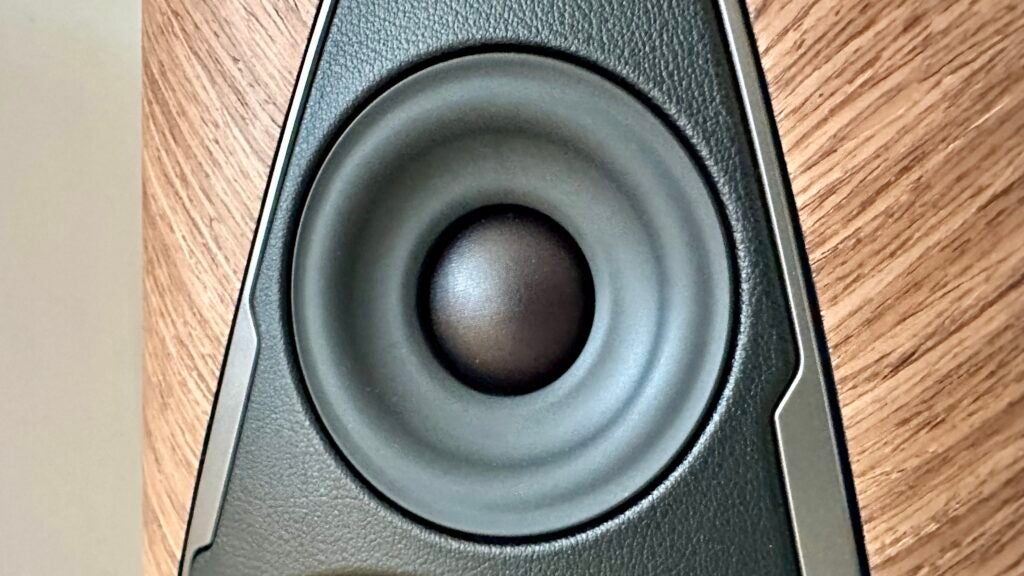
Each of the four drivers has its own DAC, and the heatsinks on the rear of the cabinet conceal 100 watts of Class A/B amplification for each tweeter and 250 watts of Class D power for each mid/bass driver. Sonus faber suggests a frequency response of 37Hz – 30kHz can be expected from this arrangement, while the DACs (sourced from Sabre and AKM) offer compatibility with every worthwhile digital audio file format up to 32-bit/192kHz resolution.
Each speaker requires mains power, of course – Sonus faber provides the appropriate figure-of-eight mains leads in lengths generously described as adequate. The primary speaker also takes care of all physical and wireless connectivity, and then communicates with its partner using UWB (ultra-wide band) wireless connectivity to eliminate interference and/or latency.

As far as connections go, there are plenty. Bluetooth with aptX HD codec compatibility and dual-band Wi-Fi take care of the wireless stuff – and the Wi-Fi allows Duetto to be Roon Ready, as well as compatible with Apple AirPlay 2, Spotify Connect and TIDAL Connect – and there’s Chromecast built-in too.
Physical connections are all in the recess at the base of the primary speaker, where they’re rather fiddly to get at and not so deeply recessed that you can easily use chunkier interconnects. There is a pair of stereo RCA inputs, switchable between phono and line-level – so a turntable can be directly connected. There is also a digital optical input, an Ethernet socket, a pre-out for a subwoofer and an HDMI eARC input that lets your TV join in with the Sonus faber fun.
Setting up the Duetto is currently just a little bit fiddlier than is a) ideal, and b) likely to be the case in the near(ish) future. There’s a control app promised, but it’s not ready at the time of my review – and so I set up the system using a web page accessible via QR code.

This allows me to tell the system whether the primary speaker is the left or the right channel, let it know if it’s in free space or close to a boundary, adjust high-frequency response, investigate something called a loudness optimizer [sic], advise the system as to whether or not I’m using a subwoofer (I’m not), and to check for software and firmware updates.
After that, the most basic control is available via the Senso surface on the master speaker. The Duetto ships with a little remote control handset too – but it’s a humdrum little device, and as such is strongly at odds with the overall vibe of Italian sophistication the system embodies otherwise.
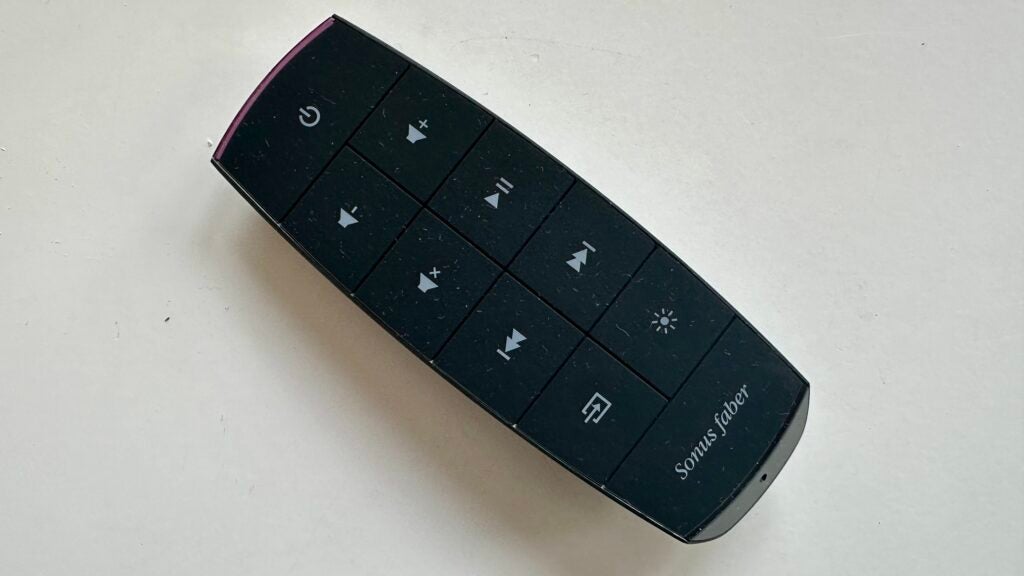
Sound Quality
- Punch and poise in equal measure
- Organised and detailed listen
- Loses a little equilibrium at biggest volumes
There’s plenty of good news to report here, but perhaps the most immediately significant is the fact that the Sonus faber Duetto could not, apparently, care less about the sort of music you like to play. From full-on symphonic attacks like the Bulgarian National Radio Symphony Orchestra’s rampage through Mussorgsky’s Night on Bare Mountain to the virtually non-existent I Saw a Ray by Grouper, the Duetto absolutely lap it up. If it’s engagement and entertainment you came for, you’ve come to the right place.
From the bottom of the frequency range to the top, the Sonus faber is tonally consistent and nicely neutral, which means the vexed description musical is entirely appropriate. Detail levels are impressively high across the board, and the system is alert to the most minor, most transient occurrences in a recording as surely as it is the stuff going on front and centre.

It can create a large and persuasive soundstage – so when little is happening in a recording, the spaces and silences are given appropriate weight, and when it’s all kicking off the layout is controlled enough to keep things coherent. To call an audio system organised doesn’t sound like the most flattering description, but it’s essential if you’re going to make proper sense of your favourite recordings.
At the bottom of the frequency range, the Duetto digs deep – certainly deep enough to make the idea of an external subwoofer seem like overkill. Attack and decay are controlled well, so decent rhythmic expression is assured, and there’s a stack of information regarding tone and texture available. Up at the opposite end, it’s a similar story inasmuch as the Sonus faber is a substantial and detailed performer – but it’s not short of brightness or bite where treble sounds are concerned, either.

The midrange, though, is probably the most out-and-out enjoyable aspect of the Duetto’s performance. Like the rest of the frequency range, it’s lavishly detailed – but it communicates with such positivity, such directness, and such eloquence that it seems unlikely in the extreme you’re not hearing everything a vocalist has to give.
The only shortcoming of any significance concerns the volume at which you listen. Be in no doubt – the Duetto can play very loud indeed if you so desire, but if you do so then some of its composure can desert it.
It maintains its overall tonality admirably, but the soundstage can become compressed and rather two-dimensional when compared to its layout at less oppressive levels – every element of a recording seems to want to rush to the front of the stage, and the sound can become rather congestion and less well-defined as a result.

Latest deals
Should you buy it?
You’re only prepared to compromise a little
Yes, you can probably get even better result by spending this same money on separate amplification, speakers, streamer, and DAC – but not hugely so
You’ve spent good money on chunky analogue interconnects
The physical connections at the bottom of one of these speakers aren’t all that accessible and the aperture isn’t all that deep.
Final Thoughts
Just because I prefer a huge stack of dedicated one function and one function only audio equipment, that doesn’t mean I don’t realise other people value discretion and convenience… and this is exactly the sort of product ‘other people’ should be buying if they want a strong flavour of just what a huge stack of equipment is capable of.
How we test
We test every hi-fi speaker we review thoroughly over an extended period of time. We use industry-standard tests to compare features properly. We’ll always tell you what we find. We never, ever, accept money to review a product.
Find out more about how we test in our ethics policy.
Tested for several days
Tested with real world use
FAQs
Yes, with its HDMI eARC/ARC port, you can connect the Duetto wireless speaker to your TV.


